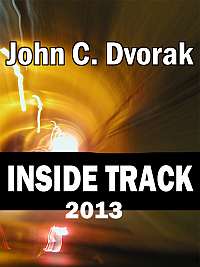
Scientists have made from scratch the Spanish flu virus that killed as many as 50 million people in 1918, the first time an infectious agent behind a historic pandemic has ever been reconstructed.
Why did they do it? Researchers say it may help them better understand — and develop defenses against — the threat of a future worldwide epidemic from bird flu.
Like the 1918 virus, the current avian flu in Southeast Asia occurs naturally in birds. In 1918, the virus mutated, infected people and then spread among them. So far, the current Asian virus has killed at least 65 people but has rarely spread person-to-person.
But viruses mutate rapidly and it could soon develop infectious properties like those seen in the 1918 bug, said Dr. Jeffery Taubenberger of the U.S. Armed Forces Institute of Pathology.
“The effort to understand what happened in 1918 has taken on a new urgency,” said Taubenberger, who led the gene-sequencing team.
The public health risk of resurrecting the virus is minimal, U.S. health officials said. People around the world developed immunity to the deadly 1918 virus after the pandemic, and a certain degree of immunity is believed to persist today. Also, in previous research, scientists concluded that modern antiviral medicines are effective against Spanish flu-like viruses.
The virus recreation, announced Wednesday, is detailed in the journal Science. The completion of that gene sequencing was announced in the journal Nature.
The virus was made from scratch, but based on a blueprint from Alaska.
Taubenberger’s team sequenced genome information recovered from a female flu victim buried in the Alaskan permafrost in 1918. Then, they shared the data with researchers at New York’s Mount Sinai School of Medicine. Using a technique called reverse genetics, the Mount Sinai researchers used the genetic coding to create microscopic, virus-like strings of genes, called plasmids.
Terrence Tumpey, the CDC research scientist who assembled the virus…had to go through a variety of scientific reviews and approvals — a process Tumpey said took about three years.
“If there was any concern about safety, the experiment would not have been approved,”[Virologist Yoshihiro] Kawaoka said.
I think we all hope so!















“The public health risk of resurrecting the virus is minimal, U.S. health officials said. People around the world developed immunity to the deadly 1918 virus after the pandemic, and a certain degree of immunity is believed to persist today.”
Famous last words?
Scary stuff!!
It reminds me of dozens of horror movies …
… and 28 days later they were ALL DEAD!!
:-/
The next pandemic will be the same. Our modern medicine and infrastructure will break down in a few weeks. Too many people will be sick. Think what will happen when crucial workers are too scared to show up for work. My grandfather survived the 1918 epidemic. His town was surrounded by state militia with orders to shoot anyone attempting the flee. Houses with sick tied a white rag on their porch. The fire department would come around every other day a fill a pot with thin soup if it was left near the curb. The high schools athletic field became a communal grave because the towns grave yard filled up. After it was over he was the head of his family at 16 years old. You may want to lay in a few weeks worth of canned goods and some bottled water. Air travelers will spread this around the world faster than they can isolate it. Can you imagine the economic impact of this on a global economy? Try shutting the world down for a few months while this burns out. As many people might starve than dies from the flu.